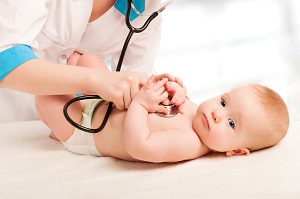Proteus syndrome is a rare genetic disease, with only 120 cases described to date. Those who suffer seem healthy at birth and the first symptoms occur only around 6-18 months.
The children show a symmetrical overgrowth, which usually affects the hands and feet. Excessive finger development and asymmetrical stretching of the limbs follow. Often these children have one leg or arm longer than the other, with deformations that can also affect the skull. As the disease progresses, cerebriformal nevi of the connective tissue can develop throughout the body.
On the neurological level, Proteus syndrome causes cognitive impairment, sinus thrombosis and intracranial lesions. Benign and, more rarely, malignant tumors also appear. There is also the risk of complications such as bullous pneumopathy, pulmonary embolism, deep vein thrombosis.
Diagnosis is made by clinical observation and molecular tests. There are three categories for the disease, each with its own specific criteria related to the most common symptoms. If these criteria do not occur, it is possible that this is a disease similar to Proteus syndrome but not comparable to it. The most common are CLOVE and Maffucci syndromes, Ollier's disease and others.
Unfortunately, there is no tool for prenatal diagnosis: most of the cases are related to sporadic, non-hereditary anomalies. However, good genetic counseling is recommended for those who experience PTEN mutations. In fact, these subjects can transmit the disease with an autosomal dominant mode.
There is no resolution therapy for Proteus syndrome. The approach is multidisciplinary and includes interventions to control the most severe symptoms. Physiotherapy and occupational therapy are helpful in many cases, as well as the removal of tumors and suspicious deformities. The prognosis changes depending on the severity of the complications.
Source: orpha.net
















